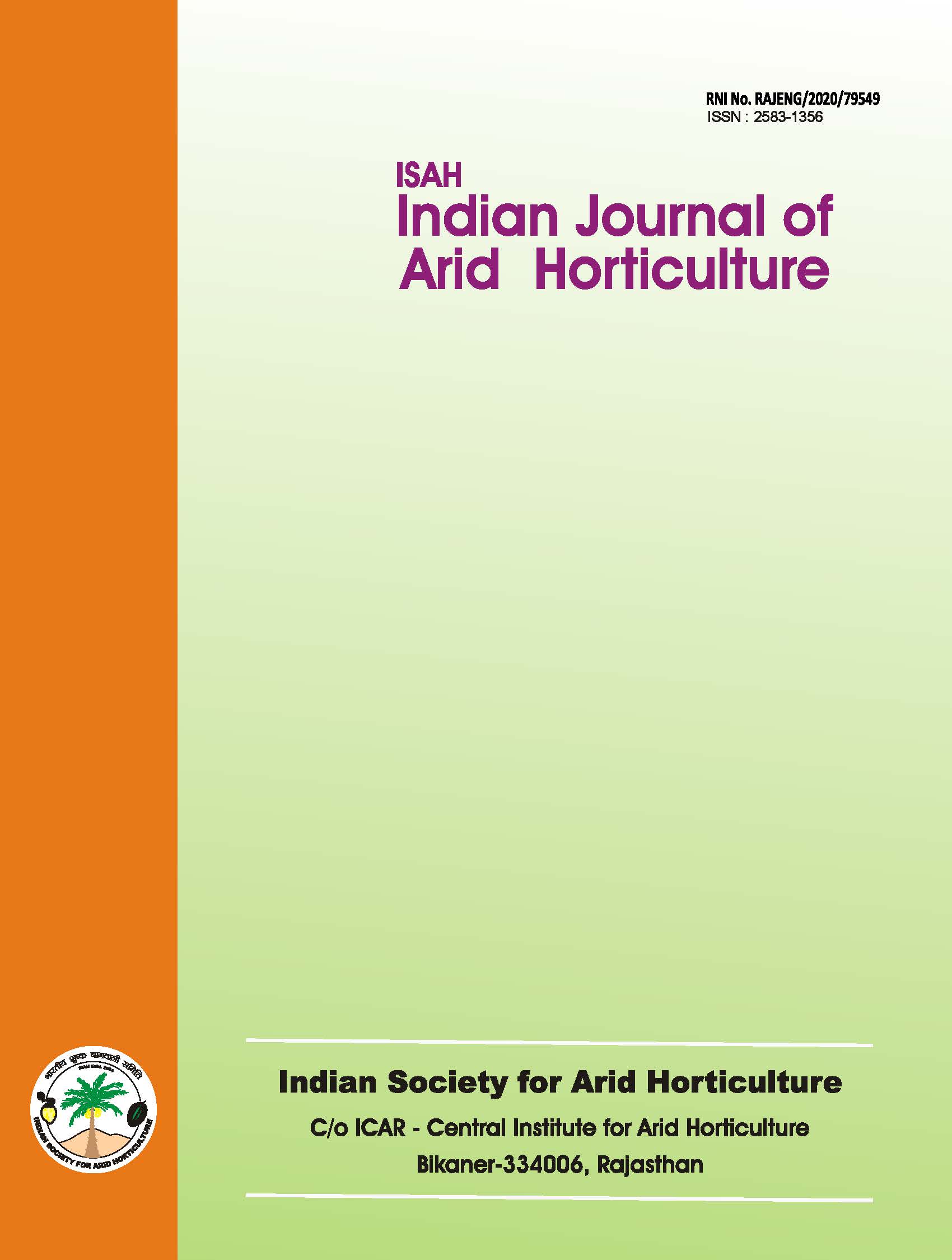Performance of ber (Ziziphus mauritiana Lamk.) to saline. water with different irrigation schedules under drip
Keywords:
Ber, saline water, drip irrigation, mulchAbstract
An experiment to study the performance of ber (Ziziphus mauritiana Lamk.) to saline water using drip irrigation was started in 2005-06 on four years old plants planted in 2002. Yield and yield attributes were recorded from 2005-06 to 2008-09. The maximum average yield (43.6 kg/plant) was obtained in the treatment 0.8PET+canal water with mulch and the yields were at par with saline water in this treatment (39.6 kg/plant). Similar trend was also observed in case of average fruit diameter and average weight of fruits. The average per day water requirement by the ber plant from 2005-06 to 2008- 09 at 1.0 and 0.8PET was maximum in the month of May i.e. 54.25 and 43.40 1/day and was minimum in the month of January i.e. 11.87 and 9.47 1/day, respectively. The average water required by the ber plant in a crop season from 2005-06 to 2008-09 were 8655 and 6927 liters at 1.0 and 0.8PET, respectively. Application of saline water resulted in salt accumulation in lower depth of the soil profile due to high hydraulic conductivity of sandy soils. Minimum salt accumulation in the soil profile existed just below the emitters. Comparatively, higher salinity levels existed in treatments with 0.8PET+without mulch conditions at almost every point of observation. This could be attributed to lower moisture level in soil profile as compared to 1.OPET thereby, increasing the salinity status. Application of plastic mulch resulted in lower salt concentration in surface soil.Downloads
References
Awasthi, O. P., Pathak, R. K., & Pandey, S. D. (1997). Sodicity and salinity on survival and nutrient status of four scion cultivars budded on Indian jujube (Zizyphus mauritiana Lamk.). Tropical Agriculture, 74, 238-242.
Bhat, N. R., Suleiman, M. K., Al-Menaie, H., Al-Mulla, L., D'Cruz, G., Ali, S. I., & George, P. (2009). Response of Zizyphus varieties to irrigation water salinity under arid climatic conditions of Kuwait. European Journal of Scientific Research, 29(4), 543-548.
Dhankar, O. P., Singhrot, R. S., & Makhija, M. (1978). Effect of soil salinity levels on seed germination and growth of transplanted seedlings of ber (Z. Rotundifolia). In Proceedings, Symposium on Arid Zone Research, Jodhpur, India, pp. 14-18.
Hooda, P. S., Sandhu, S. S., Mehta, P. K., & Ahlawat, V. P. (1990). Growth, yield, and quality of ber (Zizyphus mauritiana Lamk.) as affected by soil salinity. Journal of Horticultural Science, 65, 589-593.
Patil, P. K., & Patil, V. K. (1983). Soil salinity effect on the growth of Umran ber (Zizyphus mauritiana). Punjabrao Krishi Vidyapeeth Research Journal, 7, 71-72.
Richards, L. A. (1954). Diagnosis and improvement of saline and alkali soils. USDA Handbook No. 60, Washington, DC.
Singh, K., & Singh, K. (1994). Site suitability and tolerance limits of trees, shrubs, and grasses on sodic soils of Ganga-Yamuna Doab. Indian Forester, 3, 225-235.

